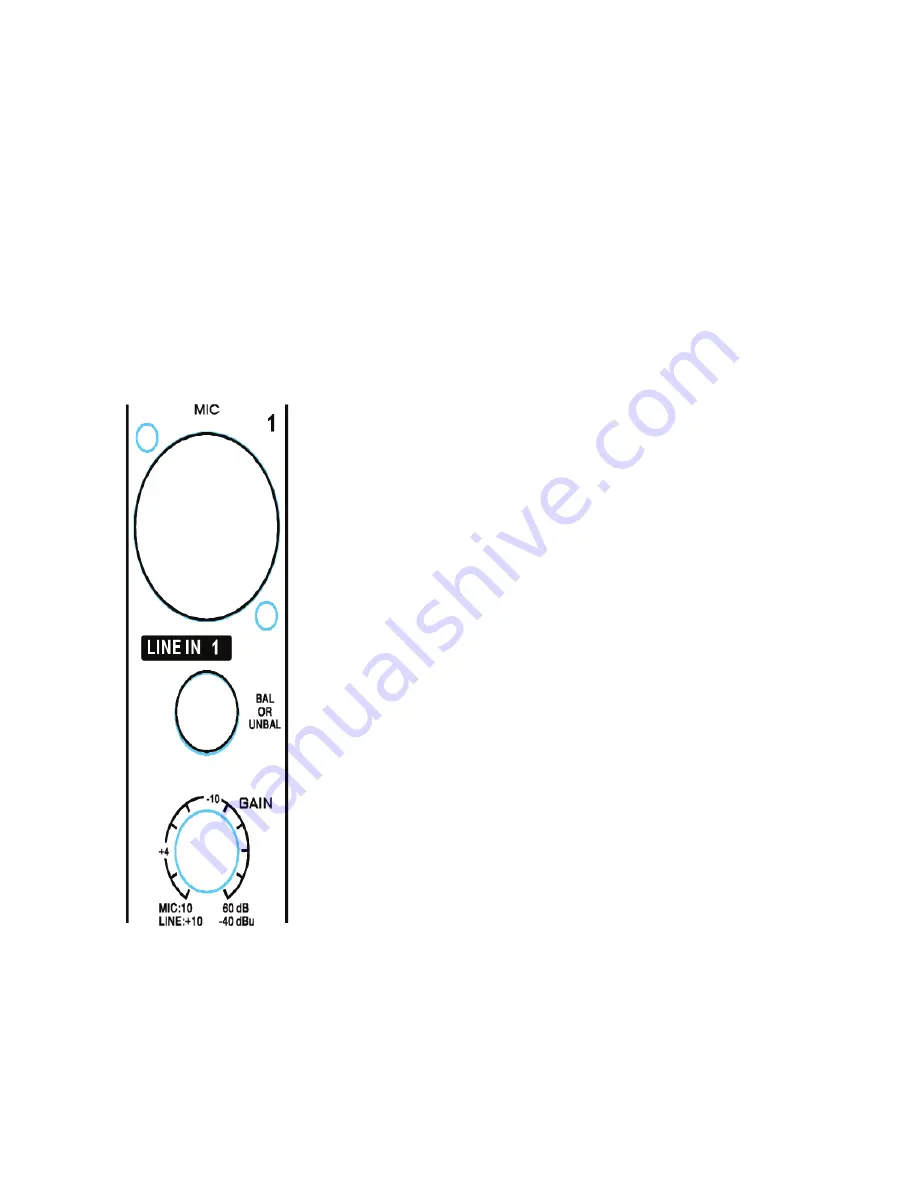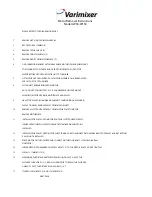
4
BACK PANEL
POWER INLET.
NOTE:
Use only the power supply unit supplied with this unit. If your power
unit goes down for what ever reason do not use a universal power supply unit,
instead contact your nearest PULSE dealer or got to www.pulse-audio.co.uk
FRONT PANEL
All the various controls will de described in this manual in sections. So
before you start to read what each piece of equipment does find it first
on the mixer. The manual will be starting in the top right hand corner
beginning with MIC1 and working its way down the channel.
MIC 1
- The mic input accepts a balanced or unbalanced XLR plug and can
also accept a balanced or an unbalanced 6.35mm (¼")
jack plug. There is also the option of using Phantom
power supply (+48V) for when the use of a condenser
microphone is needed. Caution should be taken when
using Phantom power. Firstly that you are using the cor
-
rect microphone for accepting a +48V signal and that the
signal you are using is balanced. Secondly before turning
the Phantom power on or off you must make sure you
have turned down the gain control and that your ampli
-
fier is switched off to prevent the switch on thump coming
through the speakers (the amplifier should still be turned
off when you switch on the phantom power, turning down
the gain is in case the signal is too high for your ampli-
fier). You can also used a balanced or an unbalanced
6.35mm (¼") jack plug instead of using a XLR.
LINE
- This line input accepts a 3-pole 6.35mm (¼") jack
plug. This is useful for accepting other signal inputs other
than from a microphone, for example laptop, keyboards,
drums ect. The line input is a balanced input, but it will
still accept an unbalanced signal if there is one present.
If you are using the line input then unplug anything that
is inserted into the MIC input only one signal input should
be connected at any one time per channel.
GAIN CONTROL
- The gain controls the amount of signal
being sent to the mixer from either mic or line inputs If the gain control is to
high it may distort as it overloads the channel, too low and the background
hiss may be more noticeable. Make sure that when you connect or disconnect
any signal source that the gain control is turned fully anti-clockwise.



























